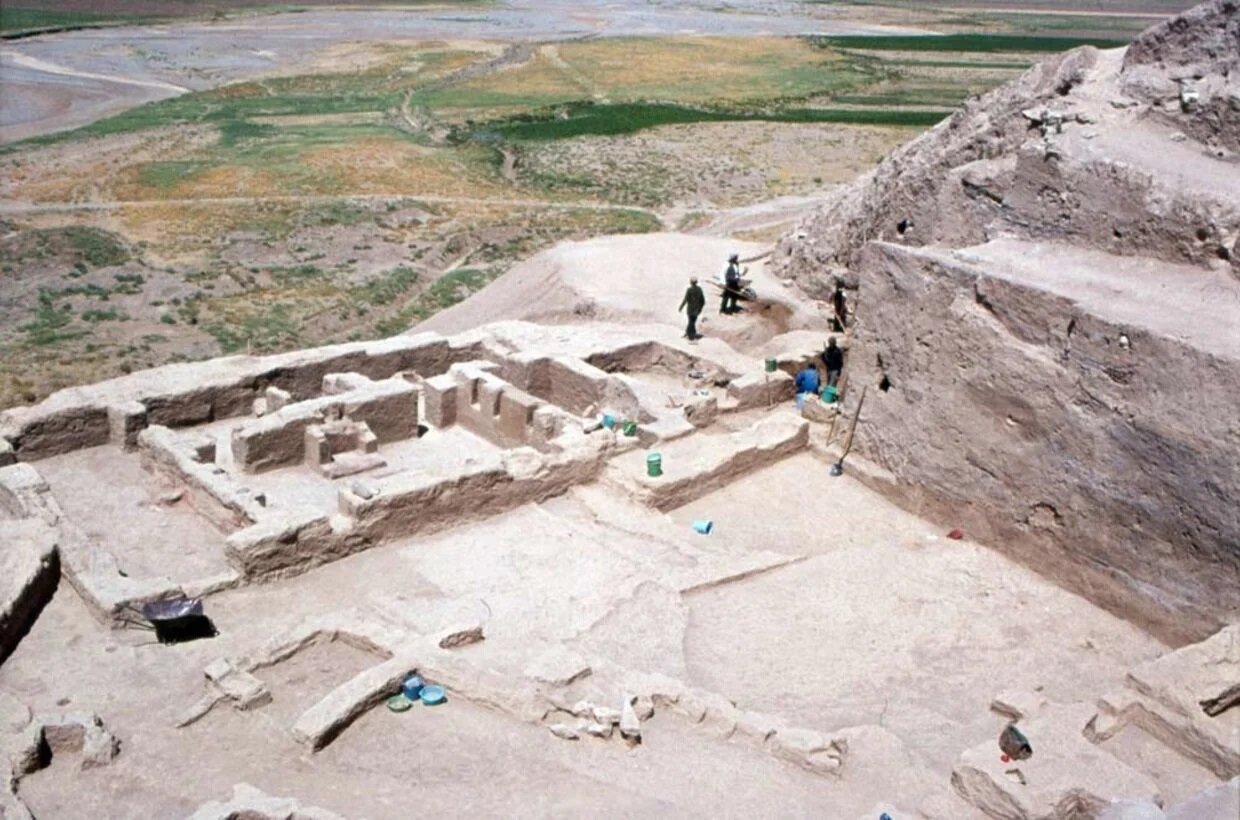Godin Tepe, a human settlement established in 5,000 BC, deserves UNESCO label, expert says

TEHRAN - Godin Tepe, which bears the longest continuous sequence of occupation of any archaeological site in central western Iran, is worthy of UNESCO status, an Iranian archaeologist said on Saturday.
Located in the Kangavar Valley of the Zagros Mountains, approximately halfway between Hamadan and Kermanshah, the archaeological site was occupied more or less continuously from the Early Chalcolithic period in about 5,000 BC to the late Iron Age in about 500 BC.
Godin Tepe is also one of the most important historical monuments left from the Medes period in Iran, which is world famous in that regard, said Morteza Geravand, who presides over Kangavar’s ancient Anahita Temple and its satellite sites such as Godin Tepe.
The site is capable of becoming a World Heritage site, he said.
Godin Tepe has recently been demarcated by an archaeological team led by Dr. Kamyar Abdi, who is a prominent theorist and archaeologist from Tehran’s Shahid Beheshti University, Geravand stated.
He said some 20 experimental trenches were carved around Godin Tepe to assess the site’s boundaries, which yielded relics and cultural materials.
The site was first discovered in 1961 during an archaeological dig conducted by the Museum of the University of Pennsylvania. Later, in 1865, Godin was excavated throughout five field seasons from 1965 to 1973 by a team directed by the late T. Cuyler Young Jr., under the auspices of the University of Toronto and the Royal Ontario Museum.
In 2005, a major publication project was undertaken under the direction of Hilary Gopnik, to sort, analyze, and make available to scholars the abundant data that emerged from these excavations. In 2011, that project culminated in the publication of the final report on the site: On the High Road: The History of Godin Tepe, Iran, by Hilary Gopnik and Mitchell Rothman (ROM Publications and Mazda Press).
The major occupation periods at Godin have been classified as Periods XI-VI (c. 5200-3800 BC); Period VI: phases 3-1 (c. 3800-3000 BC) (note that Period VI:1 was called Period V in early reports of the site); Period IV: phases 2-1 (c. 2800-2600 BC); Period III: phases 6-1 (2600-1400 BC); and Period II: phases 2-1 (c. 800-500 BC).
According to World History Encyclopedia, the site was a Sumerian settlement first inhabited c. 5000 BC, which comprised a village and a fortress. It became an important stop along the Great Khorasan Road trade route, better known as the Silk Road, which was the major avenue for trade for close to 3,000 years. (The term “Silk Road” was first coined in 1877 by the German geographer Baron Ferdinand von Richthofen in reference to the trade of Chinese silk).
AFM
Leave a Comment